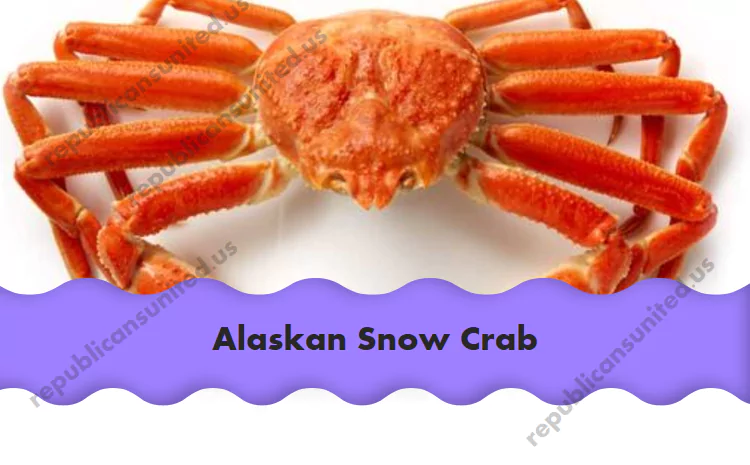
In the chilling waters off the coast of Alaska, a mysterious phenomenon has unfolded, leaving a once-thriving population of snow crabs on the brink of disappearance. In recent years, the billion-strong community of Alaskan snow crab has faced a perilous fate, prompting concern among scientists, fishermen, and environmentalists alike. As the snow crabs vanish, questions arise about the impact of warming oceans, overfishing, and the fragile ecosystem along the coast of Alaska. Join us as we delve into the intriguing world of Alaskan Snow Crab, exploring the factors contributing to their decline and the consequences for the region.
Key Takeaways
- The decline of Alaska’s snow crab population is a complex issue influenced by a combination of factors, including overfishing, warming ocean temperatures, and changes in habitat.
- The billion-strong community of Alaskan Snow Crab has faced a significant mortality event, with the 2022 heat wave playing a pivotal role in their decline.
- The closure of the snow crab fishery in 2018 and 2019 highlighted the delicate balance between human needs and environmental conservation, prompting discussions about sustainable fishing practices.
- The largest snow crab species, bairdi, has also been affected by the changing environmental conditions in the Bering Sea, emphasizing the need for targeted conservation efforts.
- Insights from NOAA researchers underscore the importance of addressing both environmental and human-induced factors to ensure the long-term sustainability of snow crab populations.
- Conservation efforts, including sustainable fishing practices and habitat protection, are crucial for the future of Alaska snow crabs and the communities that depend on them.
Enigma of Alaska’s Snow Crabs
The snow crab, a cherished inhabitant of the Bering Sea, has played a vital role in the marine ecosystem of Alaska for generations. Its sweet flavor and fibrous texture make it a sought-after delicacy, sustaining not only the local fishing industry but also contributing to the economic livelihood of the region. However, the billion-strong snow crab population that once thrived in the frigid waters is now facing a crisis that demands urgent attention.
The population of snow crabs in Alaska has undergone a dramatic shift in recent years, raising concerns among scientists and fishery experts. The reasons behind this decline are complex, intertwining environmental factors, fishing practices, and the impact of a changing climate. As we unravel the mystery of Alaska’s disappearing snow crabs, it becomes evident that a deeper understanding of their habitat, behavior, and the challenges they face is essential.
Alaskan Snow Crab: A Bering Sea Icon
The Bering Sea, a vast expanse of icy waters off the coast of Alaska, has long been the home of the iconic Alaskan king crab. These creatures thrive in the cold depths, their populations intricately connected to the rhythms of the sea. For years, the Bering Sea has supported a bustling snow crab fishery, providing sustenance to local communities and fueling a significant portion of the region’s economy.
The historical context of the snow crab fishery in Alaska reveals a delicate balance between human activity and the natural environment. Fishermen have relied on the rich resources of the Bering Sea, but as the demand for snow crab legs grew, so did the pressure on the snow crab population. The delicate dance between the fishing industry and the Alaskan Snow Crab ecosystem sets the stage for the challenges that have unfolded in recent times.
Overview of the Population Decline
In the not-so-distant past, the coast of Alaska witnessed the spectacle of billions of snow crabs migrating and thriving in their natural habitat. However, a closer look at recent data paints a grim picture of a population in decline. Factors such as overfishing and changes in ocean temperatures have contributed to a significant reduction in the number of snow crabs along the coast of Alaska.
The fishing industry, driven by the demand for crab legs, has played a pivotal role in the decline of the snow crab population. The delicate balance between human consumption and sustainable fishing practices has been disrupted, leading to a cascading effect on the ecosystem. As we explore the reasons behind the disappearance of billions of snow crabs, it becomes evident that finding a solution requires a multi-faceted approach that addresses both environmental and human-induced factors.
Changing Habitat for Snow Crabs
The coast of Alaska, with its pristine waters and icy landscapes, has long been a haven for snow crabs. However, the changing climate has brought about shifts in ocean temperatures and sea ice patterns, significantly impacting the habitat of these crustaceans. Warmer ocean temperatures, attributed to climate change, have created an environment that is less favorable for snow crabs, disrupting their natural patterns of migration and reproduction.
Sea ice, a crucial component of the snow crab habitat, has also experienced changes, further complicating the challenges faced by these creatures. The delicate balance between the frigid waters and sea ice has been disturbed, leading to a situation where the survival of snow crabs is increasingly precarious. Understanding the intricacies of the changing habitat along the coast of Alaska is essential to formulating effective conservation strategies for these iconic creatures.
Understanding the Mortality Event
In a shocking turn of events, reports emerged of snow crabs being starved to death in unprecedented numbers. The heat wave that swept through the region in 2022 created conditions that were lethal for these creatures, impacting their food sources and overall well-being. The warm ocean temperatures, combined with the absence of sea ice, led to a domino effect that resulted in a significant mortality event among snow crabs.
As scientists at the National Oceanic and Atmospheric Administration (NOAA) investigated the aftermath of the heat wave, it became clear that the changing climate was a key factor in the mortality event. The snow crab population, already stressed by overfishing and alterations in habitat, faced a crisis that pushed it to the brink of collapse. The repercussions of this event reverberated not only through the ecosystem but also through the fishing industry and the communities that depended on snow crab harvests.
Largest Snow Crab Species
Among the various species of snow crabs, the bairdi snow crab stands out as the largest and most sought-after. Its sweet flavor and succulent meat make it a prized catch for fishermen in the Bering Sea. However, the changing environmental conditions have taken a toll on the bairdi snow crab, impacting its population and altering its distribution.
The bairdi snow crab, known for its white meat and fibrous texture, faces unique challenges in the changing landscape of the Bering Sea. Understanding the specific vulnerabilities of this species is crucial for developing targeted conservation efforts that address the needs of the largest snow crab variety. As we explore the intricacies of the bairdi snow crab’s existence, it becomes evident that protecting this species is not only a matter of ecological importance but also a key aspect of sustaining the fishing industry.
Fishing Ban and Its Consequences
In response to the alarming decline in the snow crab population, authorities took the unprecedented step of closing the snow crab fishery in 2018 and 2019. This decision, while essential for the long-term health of the snow crab population, had immediate consequences for fishermen and the fishing industry in Alaska. The closure of the fishery left many without a livelihood and raised questions about the sustainability of current fishing practices.
The ban on snow crab fishing shed light on the delicate balance between human needs and environmental conservation. As fishermen grappled with the economic implications of the fishing ban, conversations emerged about the importance of adopting sustainable practices to ensure the long-term viability of the snow crab industry. The consequences of the fishing ban underscored the need for a holistic approach that considers the well-being of both the snow crab population and the communities that depend on them.
Impact of Warm Ocean Temperatures
The warming of ocean temperatures has emerged as a significant factor contributing to the decline of snow crab populations in Alaska. As climate change accelerates, the Bering Sea experiences shifts in temperature that directly impact the behavior, reproduction, and migration patterns of snow crabs. Warmer waters create conditions that are less favorable for the survival of snow crabs, leading to a decline in their overall population.
Marine heatwaves, characterized by prolonged periods of unusually high sea surface temperatures, pose a particularly grave threat to snow crabs. These heatwaves disrupt the delicate balance of the marine ecosystem, impacting the availability of food sources and creating conditions that are challenging for the survival of snow crabs. Understanding the impact of warm ocean temperatures is crucial for developing strategies to mitigate the effects of climate change on Alaska’s snow crab population.
Glimpse into Snow Crab Research
Scientists at the National Oceanic and Atmospheric Administration (NOAA) have been at the forefront of research aimed at unraveling the mysteries surrounding the decline of snow crabs in Alaska. Through comprehensive studies and data analysis, NOAA researchers have provided valuable insights into the factors affecting snow crab populations and the broader implications for the marine ecosystem.
According to the NOAA, warmer ocean temperatures, marine heatwaves, and overfishing are key contributors to the decline of snow crabs. The findings of these researchers highlight the urgency of addressing both environmental and human-induced factors to ensure the sustainability of snow crab populations. As we delve into the research conducted by NOAA, a clearer picture emerges of the challenges faced by snow crabs and the importance of informed conservation efforts.
Conservation Efforts and Future Perspectives
In the face of the challenges posed by the decline of snow crab populations, efforts are underway to implement conservation measures and safeguard the future of these iconic creatures. Conservationists, scientists, and policymakers are collaborating to develop strategies that address the root causes of the decline, with a focus on sustainable fishing practices, habitat protection, and climate change mitigation.
One key aspect of future conservation efforts involves fostering awareness and understanding among the general public about the importance of Alaskan Snow Crab in the ecosystem. Additionally, the fishing industry is exploring innovative approaches to ensure the long-term viability of snow crab harvests, balancing economic interests with environmental sustainability.
As we look ahead, the fate of Alaska’s snow crabs remains uncertain. However, by learning from past mistakes, embracing sustainable practices, and actively participating in conservation initiatives, there is hope for the recovery of snow crab populations and the preservation of the unique ecosystem they inhabit.







